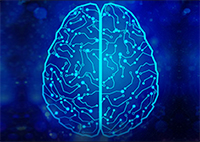COVID-19 is an emerging, rapidly evolving situation.
Get the latest public health information from CDC: https://www.coronavirus.gov
Get the latest research information from NIH: https://www.nih.gov/coronavirus
NIH staff guidance on coronavirus (NIH Only)
You are here
Dyssynergia Cerebellaris Myoclonica Information Page

Dyssynergia Cerebellaris Myoclonica Information Page
Dyssynergia Cerebellaris Myoclonica Information Page
What research is being done?
The NINDS supports a broad range of research on neurodegenerative disorders such as Dyssynergia Cerebellaris Myoclonica. The goals of this research are to find ways to prevent, treat, and cure these kinds of disorders.
Information from the National Library of Medicine’s MedlinePlus
Cerebellar Disorders
The NINDS supports a broad range of research on neurodegenerative disorders such as Dyssynergia Cerebellaris Myoclonica. The goals of this research are to find ways to prevent, treat, and cure these kinds of disorders.
Information from the National Library of Medicine’s MedlinePlus
Cerebellar Disorders
The NINDS supports a broad range of research on neurodegenerative disorders such as Dyssynergia Cerebellaris Myoclonica. The goals of this research are to find ways to prevent, treat, and cure these kinds of disorders.
Information from the National Library of Medicine’s MedlinePlus
Cerebellar Disorders
Dyssynergia Cerebellaris Myoclonica refers to a collection of rare, degenerative, neurological disorders characterized by epilepsy, cognitive impairment, myoclonus, and progressive ataxia. Symptoms include seizures, tremor, and reduced muscle coordination. Onset of the disorder generally occurs in early adulthood. Tremor may begin in one extremity and later spread to involve the entire voluntary muscular system. Arms are usually more affected than legs. Some of the cases are due to mitochondrial abnormalities.
Dyssynergia Cerebellaris Myoclonica refers to a collection of rare, degenerative, neurological disorders characterized by epilepsy, cognitive impairment, myoclonus, and progressive ataxia. Symptoms include seizures, tremor, and reduced muscle coordination. Onset of the disorder generally occurs in early adulthood. Tremor may begin in one extremity and later spread to involve the entire voluntary muscular system. Arms are usually more affected than legs. Some of the cases are due to mitochondrial abnormalities.
Treatment of Dyssynergia Cerebellaris Myoclonica is symptomatic. Myoclonus and seizures may be treated with drugs like valproate.
Treatment of Dyssynergia Cerebellaris Myoclonica is symptomatic. Myoclonus and seizures may be treated with drugs like valproate.
Dyssynergia Cerebellaris Myoclonica refers to a collection of rare, degenerative, neurological disorders characterized by epilepsy, cognitive impairment, myoclonus, and progressive ataxia. Symptoms include seizures, tremor, and reduced muscle coordination. Onset of the disorder generally occurs in early adulthood. Tremor may begin in one extremity and later spread to involve the entire voluntary muscular system. Arms are usually more affected than legs. Some of the cases are due to mitochondrial abnormalities.
Treatment of Dyssynergia Cerebellaris Myoclonica is symptomatic. Myoclonus and seizures may be treated with drugs like valproate.
The progression of the disorder is usually 10 years or longer.
The progression of the disorder is usually 10 years or longer.
The progression of the disorder is usually 10 years or longer.
Dyssynergia Cerebellaris Myoclonica refers to a collection of rare, degenerative, neurological disorders characterized by epilepsy, cognitive impairment, myoclonus, and progressive ataxia. Symptoms include seizures, tremor, and reduced muscle coordination. Onset of the disorder generally occurs in early adulthood. Tremor may begin in one extremity and later spread to involve the entire voluntary muscular system. Arms are usually more affected than legs. Some of the cases are due to mitochondrial abnormalities.
Treatment of Dyssynergia Cerebellaris Myoclonica is symptomatic. Myoclonus and seizures may be treated with drugs like valproate.
The progression of the disorder is usually 10 years or longer.
The NINDS supports a broad range of research on neurodegenerative disorders such as Dyssynergia Cerebellaris Myoclonica. The goals of this research are to find ways to prevent, treat, and cure these kinds of disorders.
Information from the National Library of Medicine’s MedlinePlus
Cerebellar Disorders










